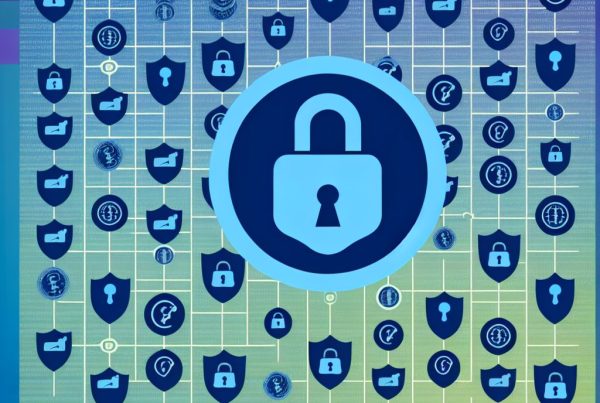What Is a Multisig Wallet?
In the world of cryptocurrency, security is paramount. As digital assets continue to gain popularity, the need for robust security measures has never been more critical. One of the most effective solutions to enhance security in cryptocurrency transactions is the multisig wallet. This article delves into the intricacies of multisig wallets, their functionality, benefits, and real-world applications, providing a comprehensive understanding for both newcomers and seasoned crypto enthusiasts.
Understanding Multisig Wallets
A multisig wallet, short for multi-signature wallet, is a type of cryptocurrency wallet that requires multiple private keys to authorize a transaction. Unlike traditional wallets that rely on a single key, multisig wallets enhance security by distributing control among multiple parties. This feature is particularly useful for organizations, partnerships, or individuals who want to ensure that no single person has complete control over the funds.
How Multisig Wallets Work
At its core, a multisig wallet operates on a simple principle: it requires a predefined number of signatures (private keys) to execute a transaction. The configuration of a multisig wallet is typically expressed in the format M-of-N, where:
- M is the minimum number of signatures required to authorize a transaction.
- N is the total number of private keys associated with the wallet.
For example, a 2-of-3 multisig wallet means that out of three private keys, at least two must sign off on a transaction for it to be valid. This setup significantly reduces the risk of unauthorized access and fraud.
Benefits of Using Multisig Wallets
Multisig wallets offer several advantages that make them an attractive option for managing cryptocurrency assets:
- Enhanced Security: By requiring multiple signatures, multisig wallets reduce the risk of theft and unauthorized transactions.
- Shared Control: They allow multiple parties to manage funds collaboratively, making them ideal for businesses and organizations.
- Reduced Risk of Loss: If one key is lost or compromised, the funds remain secure as long as the required number of signatures can still be obtained.
- Customizable Access: Users can tailor the number of required signatures based on their specific needs, providing flexibility in fund management.
Types of Multisig Wallets
There are various types of multisig wallets, each catering to different needs and use cases:

1. Personal Multisig Wallets
These wallets are designed for individual users who want to enhance their personal security. For instance, a user might set up a 2-of-3 wallet where they hold two keys, and a trusted friend holds the third key. This setup ensures that even if one key is lost, the user can still access their funds.
2. Business Multisig Wallets
Businesses often use multisig wallets to manage company funds. A common configuration might be a 3-of-5 wallet, where three out of five executives must approve a transaction. This prevents any single individual from having unilateral control over the company’s assets.
3. Escrow Multisig Wallets
In transactions involving multiple parties, such as real estate deals or online marketplaces, escrow multisig wallets can be employed. These wallets require signatures from both the buyer and seller, and sometimes a third-party escrow agent, ensuring that funds are only released when all parties agree.
Real-World Applications of Multisig Wallets
Multisig wallets have found numerous applications across various sectors, showcasing their versatility and effectiveness in enhancing security:
1. Cryptocurrency Exchanges
Many cryptocurrency exchanges utilize multisig wallets to secure user funds. By requiring multiple signatures for withdrawals, exchanges can protect against internal fraud and hacking attempts. For example, Bitfinex has implemented a multisig wallet system to safeguard its users’ assets.
2. Decentralized Finance (DeFi)
In the DeFi space, multisig wallets are often used to manage governance and treasury funds. Projects like Gnosis Safe allow decentralized organizations to manage their funds collectively, ensuring that decisions are made collaboratively and transparently.
3. Non-Profit Organizations
Non-profits can benefit from multisig wallets by requiring multiple board members to approve fund disbursements. This setup promotes accountability and transparency in financial management, which is crucial for maintaining donor trust.
Setting Up a Multisig Wallet
Creating a multisig wallet involves several steps, which may vary depending on the wallet provider. Here’s a general guide to setting up a multisig wallet:
- Choose a Wallet Provider: Select a reputable wallet provider that supports multisig functionality. Popular options include BitGo, Gnosis Safe, and Blockchain.com.
- Create the Wallet: Follow the provider’s instructions to create a new multisig wallet. You will need to specify the number of required signatures and the total number of keys.
- Distribute Keys: Generate and distribute the private keys among the designated signers. Ensure that each signer understands the importance of keeping their key secure.
- Test Transactions: Before using the wallet for significant transactions, conduct a few test transactions to ensure that the multisig functionality works as intended.
Challenges and Considerations
While multisig wallets offer enhanced security, they are not without challenges:
- Complexity: Setting up and managing a multisig wallet can be more complex than traditional wallets, requiring a good understanding of the technology.
- Coordination: In a business or group setting, coordinating among multiple signers can lead to delays in transaction approvals.
- Loss of Keys: If a key is lost and the required number of signatures cannot be obtained, access to the funds may be permanently lost.
Frequently Asked Questions (FAQs)
What is the difference between a multisig wallet and a regular wallet?
A regular wallet requires only one private key to authorize transactions, while a multisig wallet requires multiple signatures from different private keys, enhancing security and control.
Are multisig wallets completely secure?
While multisig wallets significantly improve security, they are not infallible. Users must still practice good security hygiene, such as safeguarding their private keys and using reputable wallet providers.
Can I use a multisig wallet for all cryptocurrencies?
Not all cryptocurrencies support multisig functionality. However, many popular cryptocurrencies, including Bitcoin and Ethereum, do offer multisig capabilities.
How do I recover funds from a multisig wallet if I lose a key?
If you lose a key, recovery depends on the configuration of your multisig wallet. If you have enough remaining keys to meet the required signatures, you can still access your funds. Otherwise, you may lose access permanently.
Conclusion
Multisig wallets represent a significant advancement in the security of cryptocurrency transactions. By requiring multiple signatures for authorization, they provide a robust solution to the challenges of digital asset management. Whether for personal use, business applications, or decentralized finance, multisig wallets offer enhanced security, shared control, and reduced risk of loss.
As the cryptocurrency landscape continues to evolve, understanding and utilizing multisig wallets can empower users to manage their assets more securely. For the latest news and updates in the crypto world, consider visiting Bitrabo. Stay connected with me on social media: X, Instagram, and Threads.
Disclaimer: This article is for informational purposes only and should not be considered financial advice. Always conduct your own research before making investment decisions.
The Crypto Watchlist of the Week 🔎
Subscribe to receive expert-curated projects with real potential—plus trends, risks, and insights that matter. Get handpicked crypto projects, deep analysis & market updates delivered to you.


